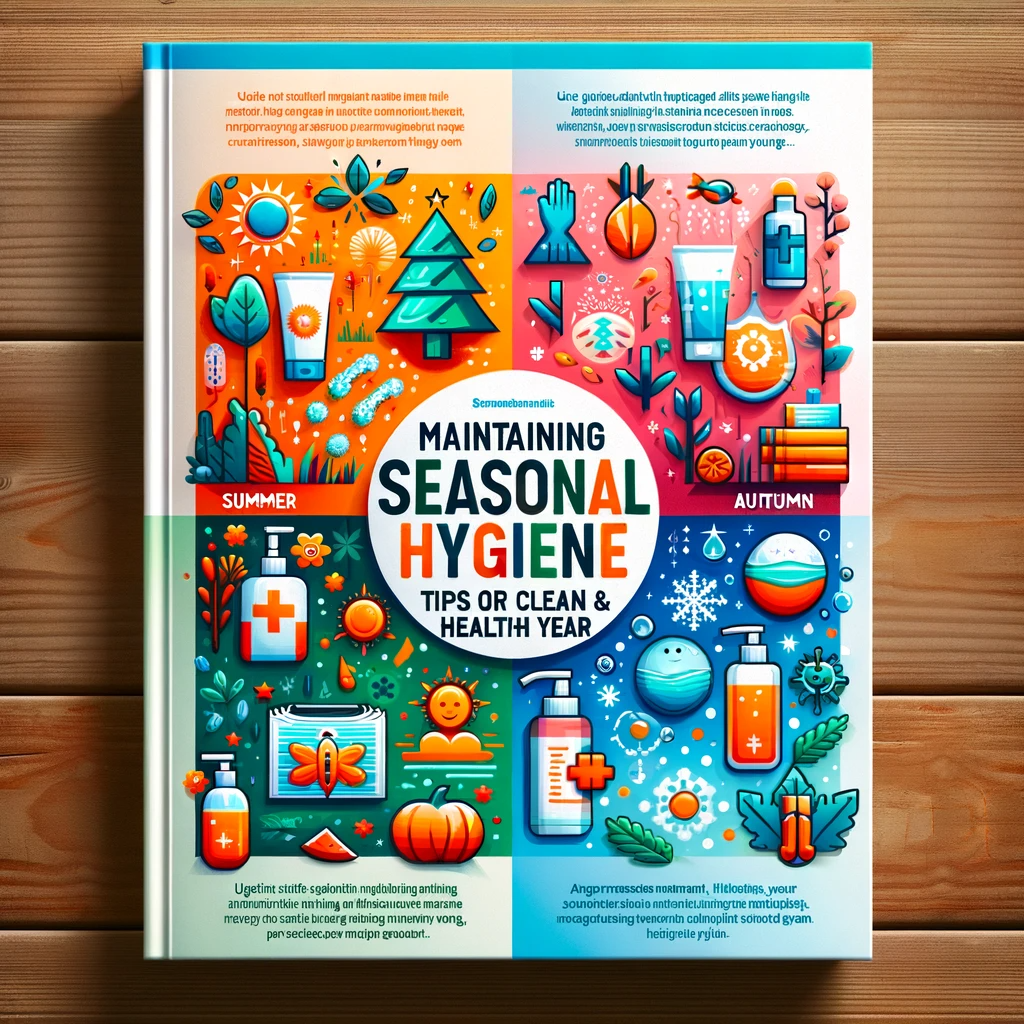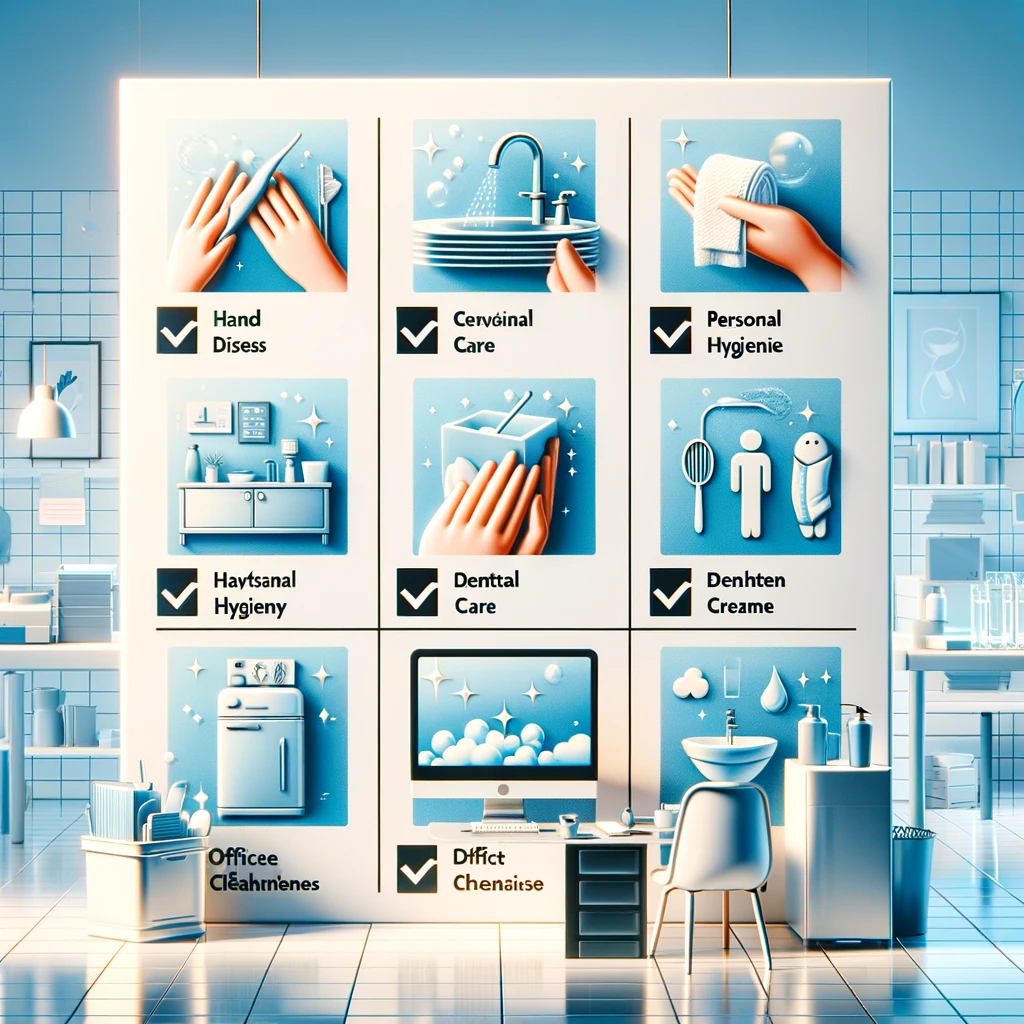Maintaining a clean and healthy living environment is a year-round commitment, and it goes beyond the routine chores of daily life. Seasonal hygiene, tailored to the specific challenges and needs of each season, is essential for ensuring that your home remains a safe, comfortable, and inviting space throughout the year. In this comprehensive guide, we will explore the importance of seasonal hygiene and its various aspects. From the basics of seasonal cleaning to practical tips for effective hygiene, creating a well-structured cleaning schedule, addressing seasonal allergies, adopting sustainable cleaning practices, and understanding the profound impact of hygiene on your health and well-being, we’ll provide you with valuable insights and actionable advice to keep your home in top-notch condition regardless of the season. So, let’s embark on this journey to discover how seasonal hygiene can lead to a cleaner and healthier living environment for you and your family.
| Seasonal Cleaning Tips | Description |
|---|---|
| Spring Cleaning | |
| Open windows for fresh air | Promote ventilation and improve indoor air quality. |
| Deep clean carpets and upholstery | Remove dust, allergens, and refresh your home. |
| Wash curtains, bedding, and windows | Ensure a thorough refresh of your living spaces. |
| Check for mold and mildew | Address damp areas and prevent health hazards. |
| Summer Refresh | |
| Service and clean your AC unit | Ensure optimal cooling and air quality. |
| Clean ceiling fans and replace filters | Prevent dust buildup and improve air circulation. |
| Focus on outdoor maintenance | Enjoy clean outdoor spaces for relaxation and fun. |
| Keep windows and doors open | Let fresh air in to create a comfortable environment. |
| Fall Prep | |
| Clear gutters to prevent clogs | Avoid potential damage to your home’s foundation. |
| Seal gaps and cracks | Keep out pests and maintain a comfortable indoor temperature. |
| Transition to warmer bedding | Prepare for cooler weather with cozy linens. |
| Vacuum and clean vents | Ensure efficient heating and cooling systems. |
| Winter Readiness | |
| Inspect and maintain your heating system | Stay warm and prevent breakdowns during winter. |
| Seal drafts to keep out cold air | Improve energy efficiency and reduce heating costs. |
| Focus on indoor tasks | Keep your home germ-free and comfortable for winter. |
| Maintain indoor humidity levels | Prevent mold growth and promote overall health. |
Introduction to Seasonal Hygiene
When we think about cleaning our homes, we often focus on the day-to-day chores, like doing the dishes or vacuuming the floors. However, there’s more to maintaining a clean and healthy living environment than just these daily tasks. Seasonal hygiene, which involves deep cleaning and specific preparations for each season, plays a significant role in ensuring our homes remain safe and comfortable year-round.
Why Seasonal Hygiene Matters
Seasonal hygiene isn’t just about aesthetics; it’s about the well-being of you and your loved ones. Let’s dive into why it’s essential to pay attention to seasonal cleaning:
Health Benefits: Proper seasonal cleaning reduces the presence of allergens, dust mites, and germs in your home. This, in turn, can help prevent allergies and respiratory issues, ensuring a healthier living space.
Longevity of Belongings: Maintaining seasonal hygiene can prolong the life of your furniture, appliances, and other possessions. Regular cleaning and maintenance prevent wear and tear caused by neglect.
Enhanced Comfort: A clean and well-organized home is more comfortable to live in. Seasonal cleaning ensures that your living spaces remain inviting and clutter-free.
The Basics of Seasonal Cleaning
Now that we understand the importance of seasonal hygiene, let’s delve into the basics of seasonal cleaning. It involves several fundamental steps to ensure your home is fresh and inviting throughout the year:
Declutter: Before you start cleaning, declutter your living spaces by getting rid of items you no longer need. This simplifies cleaning and makes it more efficient.
Gather Supplies: Ensure you have all the necessary cleaning supplies, including cleaning agents, disinfectants, microfiber cloths, brooms, and vacuum cleaners, to address the specific cleaning needs of each season.
Divide and Conquer: To avoid feeling overwhelmed, tackle one room or area at a time. This approach allows you to clean more thoroughly and stay organized.
Top Tips for Effective Seasonal Hygiene
Effective seasonal hygiene requires a combination of strategies tailored to each season’s challenges. Here are some top tips to help you maintain a clean and healthy home year-round:
Spring Cleaning Tips:
- Open windows to let in fresh air.
- Deep clean carpets and upholstery.
- Wash curtains, bedding, and windows.
- Check for mold and mildew in damp areas.
Summer Refresh Tips:
- Service and clean your air conditioning unit.
- Clean ceiling fans and vents.
- Focus on outdoor maintenance, including cleaning the grill and patio furniture.
Fall Prep Tips:
- Clear gutters to prevent clogs.
- Seal gaps to keep pests out.
- Switch out lightweight summer bedding for warmer options.
- Vacuum and clean vents in preparation for closed windows.
Winter Readiness Tips:
- Inspect and maintain your heating system.
- Seal drafts to keep cold air out.
- Focus on indoor tasks like cleaning vents and wiping down frequently touched surfaces.
Creating a Seasonal Cleaning Schedule
To maintain seasonal hygiene effectively, it’s crucial to create a cleaning schedule. A well-structured schedule keeps you organized and ensures that no important tasks are overlooked. Here are some subheadings to consider when creating your seasonal cleaning schedule:
Setting Priorities: Determine which areas need immediate attention and prioritize tasks accordingly.
Frequency: Define how often you’ll perform seasonal cleaning. Some tasks, like deep cleaning, may only need to be done once a season, while others, like regular dusting, may be more frequent.
Room-by-Room Checklist: Create a checklist for each room or area in your home, outlining specific cleaning tasks to be completed during each season.
Scheduling Tools: Consider using digital tools or traditional calendars to schedule cleaning tasks and reminders for each season.
Consistency: Stick to your schedule to ensure that seasonal cleaning becomes a routine part of your household maintenance.
Seasonal Hygiene in Different Seasons
Maintaining cleanliness and hygiene throughout the year involves adapting to the unique challenges presented by each season. Let’s explore how you can effectively address seasonal hygiene concerns:
Spring Cleaning: A Fresh Start
- Open windows for ventilation and fresh air.
- Deep clean carpets, upholstery, and drapes.
- Inspect and clean hidden areas for mold and mildew.
- Declutter and organize living spaces.
Summer Refresh: Embrace the Outdoors
- Service and clean your air conditioning unit.
- Clean ceiling fans and replace or clean filters.
- Focus on outdoor maintenance like cleaning the grill and patio furniture.
- Keep windows and doors open to circulate fresh air.
Fall Prep: Preparing for Cooler Months
- Clear gutters to prevent clogs.
- Seal gaps and cracks to keep out pests.
- Transition to warmer bedding options.
- Vacuum and clean vents to prepare for closed windows.
Winter Readiness: Cozy and Germ-Free
- Inspect and maintain your heating system.
- Seal drafts to conserve energy and keep cold air out.
- Focus on indoor tasks such as cleaning vents and wiping down frequently touched surfaces.
- Keep indoor humidity levels in check to prevent mold growth.
Seasonal Allergies and Hygiene
Seasonal allergies can be a significant concern, affecting many individuals. Here’s how to minimize allergens and maintain hygiene in your home:
Using HEPA Filters
- Install HEPA filters in your HVAC system to capture airborne allergens effectively.
- Regularly clean or replace air filters to maintain optimal air quality.
Frequent Bedding and Curtain Cleaning
- Wash bedding, including sheets, pillowcases, and duvet covers, frequently, especially during high pollen seasons.
- Clean curtains to remove dust and allergens that may accumulate over time.
Window Management
- During peak pollen seasons, keep windows and doors closed to prevent allergens from entering your home.
- Use window screens to filter out outdoor allergens.
Regular Dusting and Vacuuming
- Dust and vacuum your home regularly, paying attention to high-traffic areas and commonly used spaces.
- Use a vacuum cleaner equipped with a HEPA filter to capture and trap allergens effectively.
Sustainable Seasonal Cleaning Practices
Promoting sustainability in your seasonal cleaning routine is not only eco-friendly but also cost-effective. Consider these sustainable practices:
Eco-Friendly Cleaning Products
- Opt for environmentally friendly cleaning products that are free of harsh chemicals.
- Make your cleaning solutions using natural ingredients like vinegar, baking soda, and lemon juice.
Reduce, Reuse, Recycle
- Avoid single-use cleaning materials like disposable wipes.
- Repurpose old towels or clothing as cleaning rags.
- Recycle or properly dispose of cleaning product containers.
Energy-Efficient Cleaning
- Use cold water when possible to reduce energy consumption.
- Wash and dry full loads of laundry to save water and energy.
Seasonal Hygiene for Your Health
The cleanliness of your home can have a significant impact on your health and well-being. Consider these subheadings to delve deeper into maintaining hygiene for your health:
Indoor Air Quality
- Maintain proper ventilation to improve indoor air quality.
- Use air purifiers to filter out pollutants and allergens.
- Remove sources of indoor pollution, such as tobacco smoke or gas stoves.
Mental Well-Being
- A clean and organized living space can reduce stress and promote mental clarity.
- Create a calming atmosphere by minimizing clutter and maintaining cleanliness.
Physical Health
- Regular cleaning and sanitizing of frequently touched surfaces can help prevent the spread of illnesses.
- Maintain a clean and sanitary kitchen to ensure food safety.
Hygiene in Personal Spaces
- Keep bathrooms and bedrooms clean and dry to prevent mold and mildew growth.
- Wash and change bedding regularly to minimize dust mites and allergens.
Final Thoughts:
In this guide, we’ve uncovered the importance of seasonal hygiene and provided valuable insights into maintaining a clean and healthy living environment throughout the year. By understanding the unique challenges and needs of each season, adopting practical cleaning tips, creating effective schedules, addressing allergies, and embracing sustainable practices, you can transform your home into a haven of cleanliness and well-being. Remember that a clean home isn’t just about appearances; it also contributes to your physical and mental health. So, commit to seasonal hygiene, and let it be the foundation of a cleaner, healthier, and more inviting space for you and your loved ones. Start today, and enjoy the benefits of a happier and more comfortable living environment.
FAQs:
1. What is seasonal hygiene, and why is it important?
- Seasonal hygiene involves adapting your cleaning and maintenance routines to address the specific challenges of each season. It’s crucial for maintaining a clean, safe, and healthy living environment year-round, as it helps prevent allergies, illnesses, and extends the life of your belongings.
2. How often should I perform seasonal cleaning?
- The frequency of seasonal cleaning depends on your specific needs and preferences. Generally, deep cleaning is recommended at the beginning of each season, with regular maintenance throughout. Create a schedule that works for you.
3. What are some key tasks for spring cleaning?
- Spring cleaning typically includes deep cleaning tasks like washing windows, cleaning carpets, decluttering, and checking for mold or mildew in damp areas. It’s also an excellent time to freshen up your home.
4. How can I minimize seasonal allergies in my home?
- To reduce seasonal allergies, use HEPA filters in your HVAC system, wash bedding frequently, keep windows closed during high pollen seasons, and maintain a regular dusting and vacuuming routine.
5. Are there eco-friendly cleaning options for seasonal hygiene?
- Yes, you can use eco-friendly cleaning products or create your own solutions using natural ingredients like vinegar and baking soda. Additionally, reduce waste by repurposing items and recycling cleaning product containers.
6. What are some health benefits of maintaining seasonal hygiene?
- Seasonal hygiene can improve indoor air quality, reducing the risk of allergies and respiratory issues. It also helps prevent the spread of illnesses and contributes to a clean and organized living space, which can positively impact mental well-being.
7. How can I create an effective seasonal cleaning schedule?
- When creating a seasonal cleaning schedule, set priorities, determine task frequency, create room-by-room checklists, use scheduling tools like calendars or apps, and commit to consistency to make seasonal cleaning a routine part of your home maintenance.
8. What impact does seasonal hygiene have on the longevity of my belongings?
- Regular cleaning and maintenance can extend the life of your furniture, appliances, and other possessions. By preventing dust buildup and wear and tear, you can save money in the long run.
9. Can I apply seasonal hygiene to different climates and regions?
- Absolutely! Seasonal hygiene can be adapted to suit various climates and regions. The key is to consider the specific challenges posed by your environment and adjust your cleaning routines accordingly.
10. How does seasonal hygiene contribute to overall well-being?
- A clean and well-maintained living space promotes a sense of comfort and reduces stress. Moreover, it provides a safe and healthy environment for you and your family, contributing to your overall physical and mental well-being.







